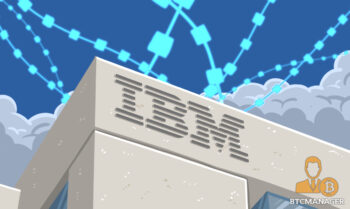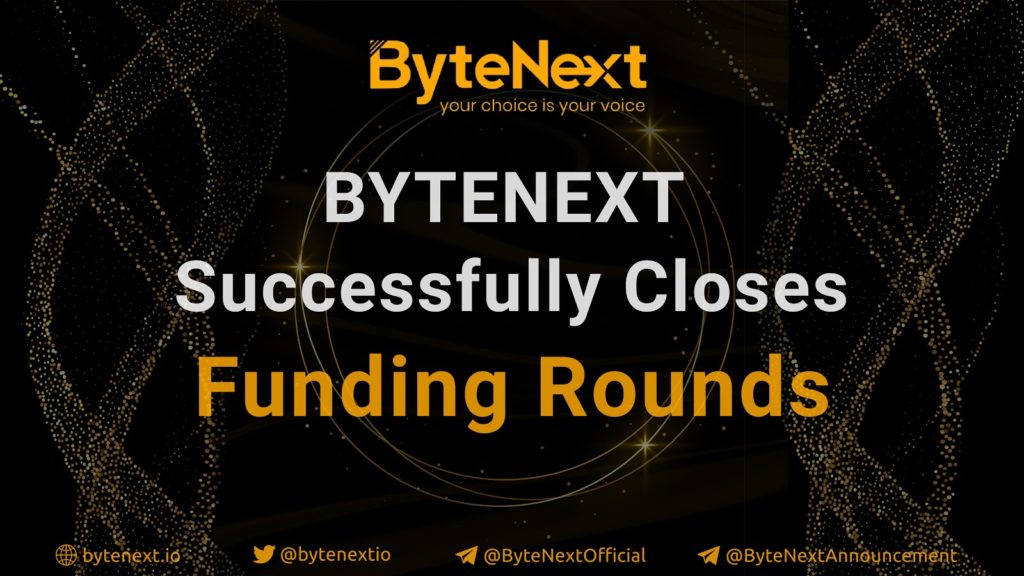2018-8-9 13:11 |
As blockchain technology continues to gain traction amongst the masses, more challenges arise as a result of its popularity. While the disruptive potential of distributed ledger technology is irrefutable, its application to real-life situations is largely impractical, mainly due to expensiveness and incompetent infrastructure. Their key selling point, decentralization, also happens to be their Achilles heel.
Typically, decentralized networks are cheaper to construct, but their high maintenance costs make them nearly untenable. Moreover, scaling poses a real challenge, since additional resources are required to serve the ever-growing number of user nodes.
Consequently, the blockchain industry has shifted focus towards the development of solutions to the scalability menace. In this regard, numerous applications are in developmental stages with a sole aim of enabling blockchain networks to scale efficiently and meet the increasing demand for the technology.
Top 5 Blockchain Scalability SystemsThe following are the most auspicious scalability solutions to watch out for before the end of the year.
Plasma – A Better Version Of The Ethereum BlockchainAt its launch, the Ethereum network drew much enthusiasm in the crypto community, primarily because it offered a platform for the creation of decentralized apps (DApps). Also, the blockchain offered a more stable alternative to Bitcoin’s limiting consensus algorithms, albeit theoretically. Nonetheless, the scalability challenge has already caught up with the Ether network. In response, the blockchain’s founder, Vitalik Buterin, has developed a solution that could provide lasting solution to the scaling problems.
Plasma is a technology that enables users to establish ‘child’ blockchains off the larger Ethereum network. By doing this, the number of users on the main blockchain reduce, resulting in the faster processing of transactions. Usually, the challenge posed by scaling is the increased demand for limited resources due to an increased number of nodes on the chain. Therefore, Plasma mitigates the strain on the network by allowing users to create micro-chains, making it easier to scale the Ethereum blockchain to accommodate intensive real-world use cases.
Notably, Plasma is the centerpiece of the second phase of the Ethereum blockchain, as stated by both Vitalik and Joseph Lubin (a co-founder of the Ether network). It is expected that the developers will deploy Plasma alongside previous solutions such as sharding to further enhance the scalability of the Ethereum blockchain. As of now, many speculate that the much-awaited Phase Two of the Ethereum blockchain will go live in early 2019.
EOS – Improving Blockchain For EnterpriseSince its inception, EOS has earned multiple plaudits for its innovativeness, scalability and its disengagement from the mainstream blockchains, namely Ethereum and Bitcoin. Rather than building a typical blockchain platform for the development and hosting of DApps, EOS developed an environment similar to an operating system. The EOS platforms avails a universal template through which developers can create personalized DApps. Remarkably, EOS technology emphasizes on the speed and throughput of transactions, the two factors that limit the scalability of a network.
Due to the limited size of blocks on the Bitcoin network, the blockchain can handle a paltry seven transactions per seconds. On the other hand, the Ethereum network can only process a maximum of twenty transactions per second. EOS, however, beats these two, with a capability of handling an impressive 50,000 transactions in a second.
The tools deployed on the EOS network make it substantially lighter than the Ethereum blockchain, and thereby easier to scale. For instance, EOS uses a delegated proof-of-stake (DPoS) consensus algorithm that consumes lesser time during verification, allowing a faster processing of transactions. Furthermore, EOS supports parallel processing, enabling multiple DApps to run concurrently without using the same resources. Parallel processing is made possible by the presence of both horizontal and vertical scaling.
Last month, EOS launched the EOSIO 1.0. Currently, the company is working on a subsequent upgrade that will add the parallel execution functionality. Later on, EOS is expected to include the cluster implementations feature.
Zilliqa – Enhancing Throughput For Scalable DApp DevelopmentAs mentioned earlier, sharding was one of the first methods deployed to solve the scaling issues on the Ethereum blockchain. Essentially, sharding involves the breaking down of large data sets into smaller chunks which are then processed individually and regrouped into the original set. While sharding is still in its developmental stages, Zilliqa has released an advanced version of the mechanism that has demonstrated enormous potency regarding scalability and creation of DApps.
Using its hybrid consensus mechanism, which is based on sharding, Zilliqa increases process throughput by a substantial margin by reducing the strain on the blockchain and increasing speed as more nodes join the network. Hence, unlike Bitcoin and Ethereum, whose networks are overwhelmed when the number of nodes exceeds a certain threshold, the Zilliqa network thrives when the number of user increase. For example, a Ziliqa network with 1,800 users can process 1,200 transactions per second. Impressively, this number doubles when the number of nodes are slightly increased.
Amazingly, the Zilliqa network is yet to realize its full potential because it still in its Testnet mode. The success of the firm earlier this year is attributed to the deployment of the proof-of-concept protocol. Before the end of 2018, the company intends to launch its mainnet, as well as its flagship DApp. As of now, the platform’s utility token, ZIL, is ranked 24th as per market capitalization, a ranking that is expected to go higher after the release of the mainnet.
Aion – Promoting Cross-Chain Communication And Transaction CapacityThe ever-growing number of blockchain startups presents yet another problem for scalability; market fragmentation. As more projects enter the market, they limit the overall growth of the blockchain industry (from a scaling perspective). Presently, there is a conspicuous absence of a solution that provide cross-chain communication. Aion is a tiered blockchain platform that aims to promote cross-platform communication and provide a simpler means for scaling and creating faster blockchain solutions.
Aion, which was established in 2017, has already released its roadmap that stipulates that the inaugural version of the solution will go live before the end of this year. The most exciting feature of the upcoming platform is the ability of developers to create private and public micro-chains off the main AION-1 chain. Notably, the micro-chains will be automatous, customizable and inter-operable, meaning that they can seamlessly communicate with the Ethereum blockchain without having to be hosted on-chain.
For this reason, the blockchains are easily scalable, since they are not dependent on the shared processing power of the main blockchain, though they can leverage the capabilities of the main network (if needed). Additionally, AION-1 chain is lighter than the Ethereum blockchain because it does not keep records of all transactions.
Although Aion is a minnow when put up against established blockchain networks, it is on a significant rise and has already amassed a market capitalization of $120 million. Having completed the initial phase of the project, Aion has slated the end of the year as the designated period for the launch of the second phase, known as Denali. The Denali version will include the Aion Virtual Machine, as well as the Proof-of-Intelligence (PoI) consensus mechanism.
PoI is unique consensus mechanism that can transform machine learning on distributed ledgers by increasing the efficiency of AI and expanding the scope of neural networks. PoI is eerily similar to Bitcoin’s proof-of-work, with the only exception being miners are required to train neural networks to solve hashing puzzles. Aion is confident that PoI will serve as the foundation for future blockchain-based AI and machine learning solutions.
QuarkChain – Optimizing Transaction SpeedRegarding scalability of blockchain networks, transactions per second (TPS) is perhaps the most significant parameter. QuarkChain estimates that its network will have the ability to process 1 million TPS once it goes live. This purported figure is thousands of times faster than Bitcoin and Ethereum.
To achieve the said numbers, QuarkChain will deploy a two-tiered blockchain, with one blockchain designated for sharding and verifying transactions, while the root chain will handle the confirmation of the sharded blocks before appending them onto the blockchain. Since the beginning of the year, the company has been working on its Testnet and digital wallets, managing a top speed of 2,000 TPS. However, these figures are yet to be affirmed by third-party auditors, so caution should be exercised before considering them.
Contrariwise, the sharding mechanism employed by QuarkChain has received plaudits from several authorities for its creative approach. Rather than forming a side chain to handle sharding, QuarkChain uses parallel chains that operate simultaneously in isolation, translating to faster processing speeds.
The company expects to launch the mainnet in the last quarter of 2018. Alongside the mainnet, QuarkChain will also release the proprietary wallet that has the ability of collecting tokens for every individual shard. While the 1 million TPS proposal seems far-fetched, the company has set its next TPS target at 100,000, up from the current 2,000. If achieved, this leap will be the most significant since the famous improvement in scalability by the Ethereum blockchain.
Top 5 Blockchain Scalability Systems ConclusionThe projects mentioned above are only a few of the many that are attempting to solve the scalability challenge. Should they manage to realize their enormous potential, the will undoubtedly spur the mass adoption of blockchain technology.
origin »Advanced Technology Coin (ARC) на Currencies.ru
|
|


















